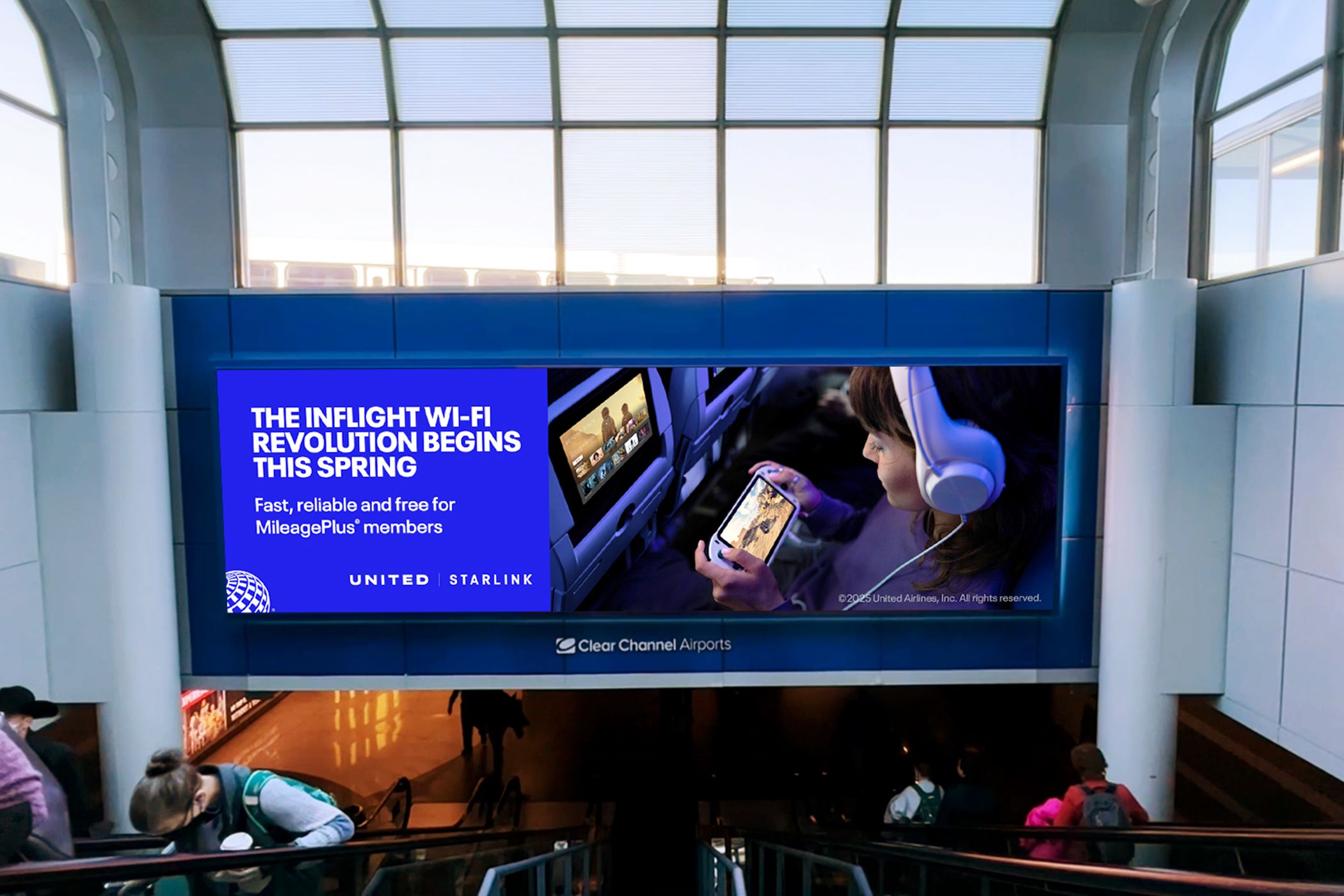
While some might see airline travel as a rare reprieve from a life online, those who travel for work rely on competent in-flight WiFi. Here to transform the internet of the skies is United, with the company officially starting its installation of Starlink’s satellite-compatible hardware on its fleet.
United Is Getting a Starlink Makeover
Following a deal with Elon Musk’s SpaceX in 2024, United Airlines has now outfitted its first plane with Starlink hardware. If you’re not sure what Starlink is or how it works, a Starlink antenna communicates with Starlink satellites to bring customers high-speed internet while flying. According to the video released today, this new hardware should boost in-flight Wi-Fi speeds to nearly 250 megabits per second, which is on par with most terrestrial networks.
In terms of roll-out, United aims for a cadence of outfitting 40 planes per month with Starlink hardware. As described in United’s announcement in January 2025, the first commercial flights to get their Starlink makeover are part of the company’s smaller, regional fleet, such as the “United Embraer E-175 aircraft.”
As the company acquires FAA approvals for each aircraft type, you’ll likely start to see Starlink internet showing up on mainline aircraft. Realistically, mainline aircraft will probably be a 2026 project.
United’s Starlink Internet is Free (and Reliable)
The airline has highlighted that members of its loyalty program, called MileagePlus will get free access to this boosted Wi-Fi. That’s a great perk, especially considering that most in-flight Wi-Fi that you have to pay for these days is fairly slow and unreliable. I can imagine a future where United pulls the Starlink service beyond a paywall, but let’s not put the cart before the horse.
Reliability is the key benefit to this transformation. Starlink antennas have access to an entire constellation of satellites via a laser mesh network. Thanks to laser link communication, the antenna can switch between different Starlink satellites in low Earth orbit (LEO) as the plane moves along its path, maintaining consistent coverage.
Here’s who Starlink puts it:
“Starlink’s optical space lasers transmit data throughout the Starlink constellation, providing continuous service in areas far from SpaceX ground stations – providing coverage for your flights over the open ocean and in polar regions.”
As someone who once planned to work on a flight between Hawaii and Los Angeles, I know that it’s easy to take Wi-Fi for granted. It’s easy to forget where our mythical internet connection actually comes from. The shift to satellite internet will absolutely change the game for the in-flight experience. Pretty soon, in-flight Wi-Fi could be as smooth as that Jack and Coke you’ve been eyeing from the airline service trolley.



